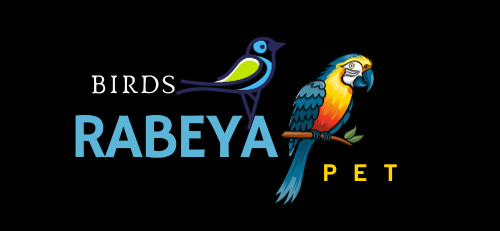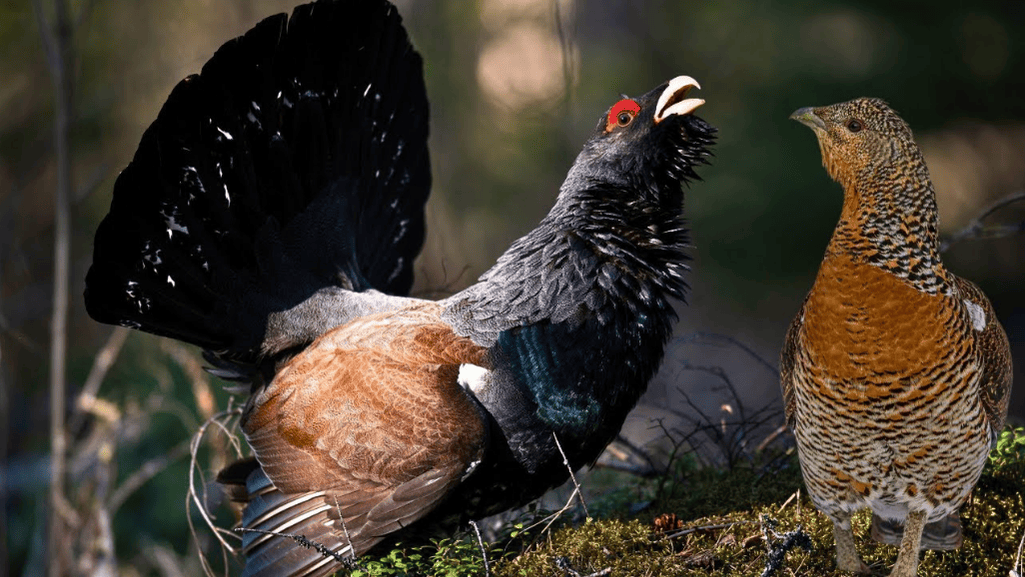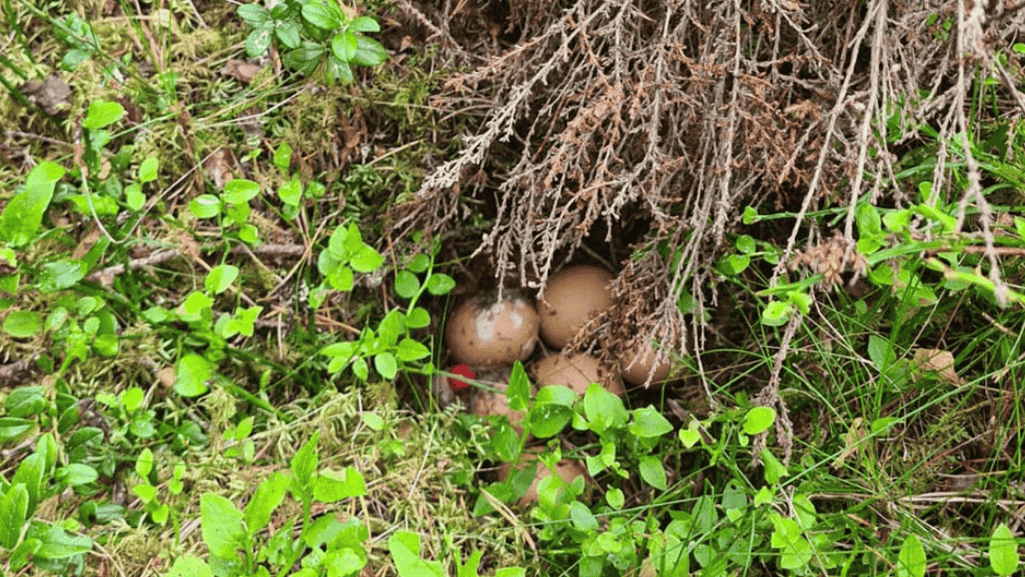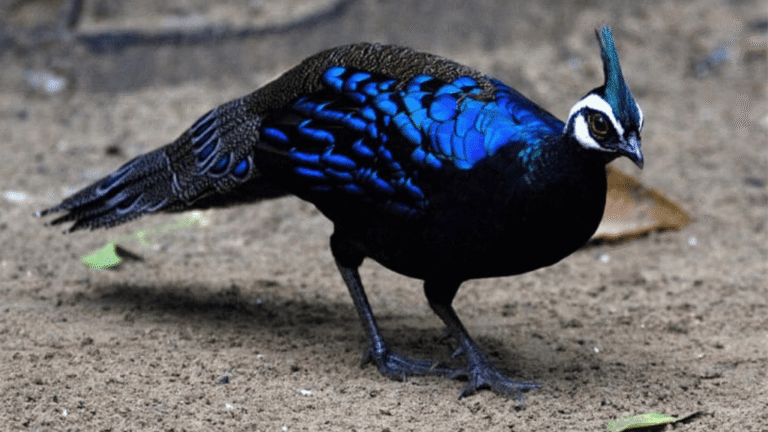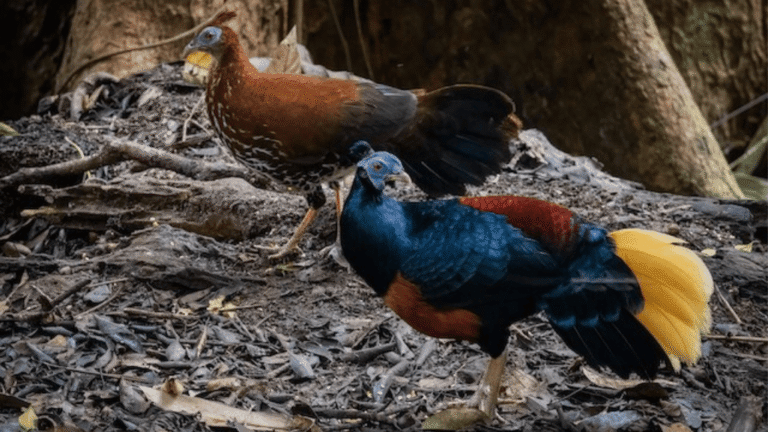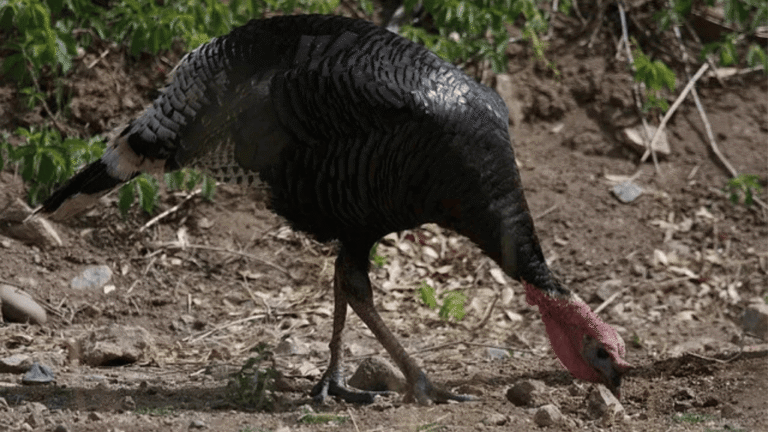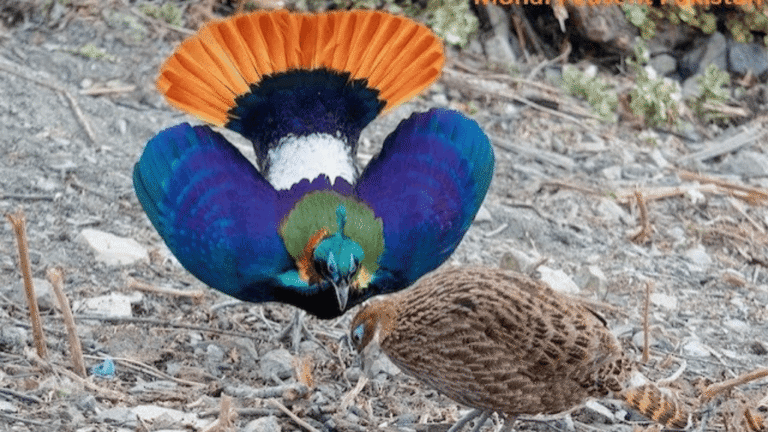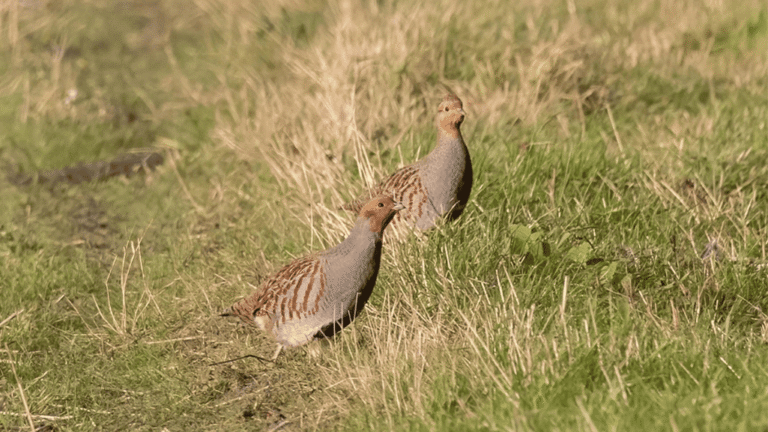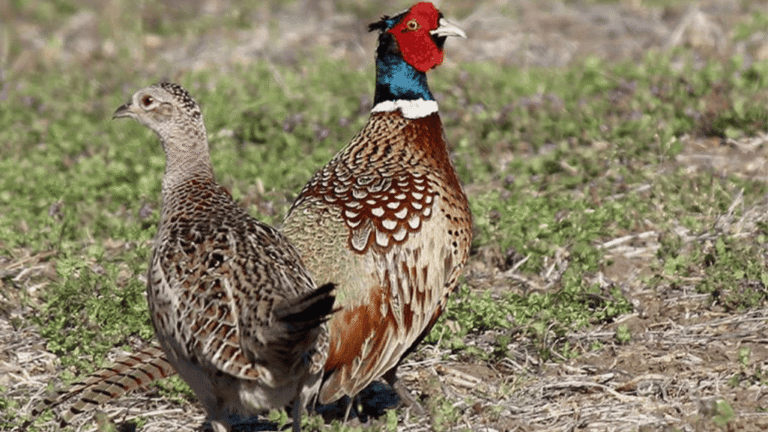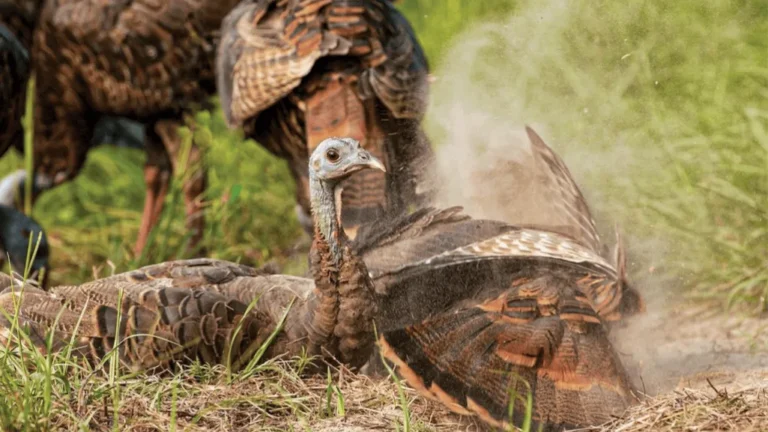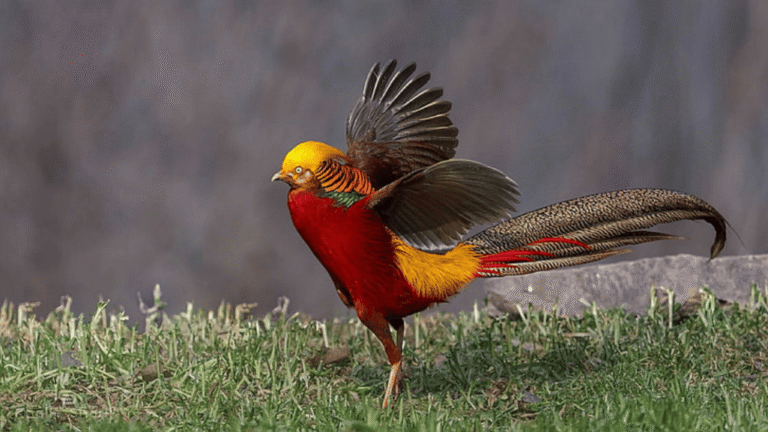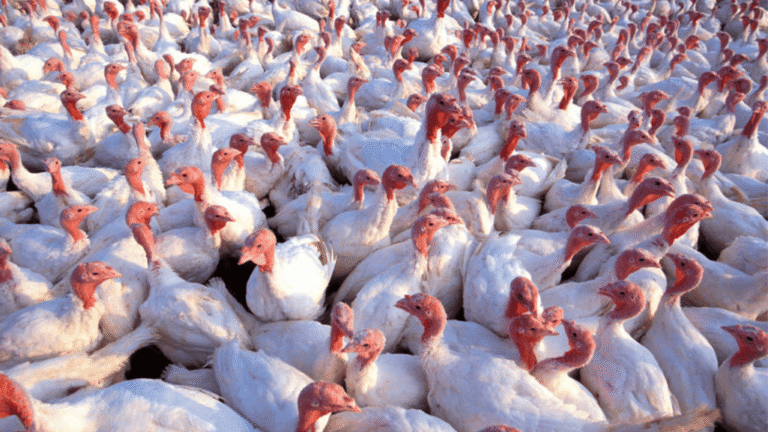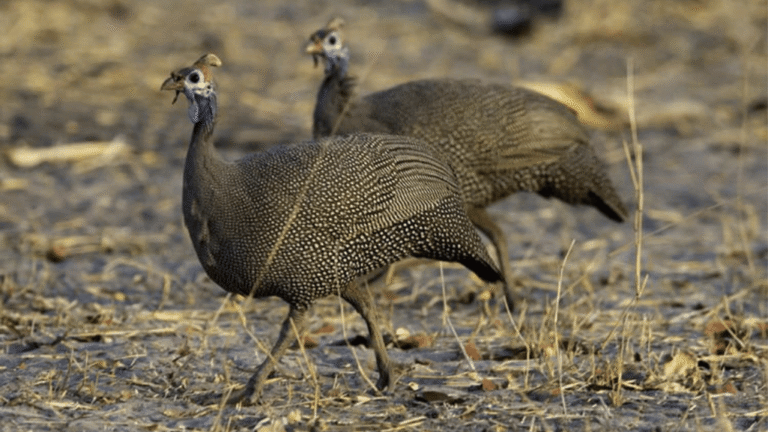Welcome to our article on Capercaillie, the largest bird in the grouse family. Native to northern Europe and Asia, the Capercaillie is known for its unique habits and habitat preferences. In this section, we will delve into the fascinating world of Capercaillie, exploring their habitat, behaviors, and the conservation efforts aimed at protecting this magnificent species.
Key Takeaways:
- The Capercaillie is the world’s largest member of the grouse family.
- It is native to northern Europe and Asia.
- The Capercaillie resides in coniferous forests, particularly in hilly and mountainous areas.
- In Scotland, the Capercaillie is restricted to pinewood habitat.
- Efforts are being made to protect and preserve the Capercaillie and its habitat through various conservation measures.
Global Distribution of Capercaillie
The Capercaillie is a remarkable bird species that can primarily be found in northern Europe and Asia. These birds thrive in coniferous forests, especially in hilly and mountainous regions, where they have adapted to their specific habitat requirements. While their distribution is predominantly concentrated in these areas, Capercaillie populations have also established outposts in the Pyrenees and Scottish Highlands.
In Scotland, the Capercaillie is one of three bird species specifically restricted to pinewood habitat. It is interesting to note that the Capercaillie population in Scotland originated from Swedish stock after facing extinction in 1785. Since then, successful reintroductions have been carried out using descendants of the original introductions, as well as additional Capercaillie brought from Scandinavia.
Unfortunately, the Scottish Capercaillie population is currently facing a significant decline. It is estimated that there are only around 1,000 individuals left in Scotland. Factors such as habitat loss, fragmentation, and disturbance during the mating season have contributed to this decline. It is crucial to address these challenges and implement effective conservation strategies to protect and preserve the Capercaillie population and its habitat.
Capercaillie Population Distribution
| Region | Population |
|---|---|
| Europe | Approximately 15,000 individuals |
| Asia | Estimated 30,000 individuals |
| Pyrenees | Population outpost |
| Scottish Highlands | Approximately 1,000 individuals |
The table above provides an overview of the Capercaillie population distribution across various regions. It highlights the estimated population sizes and showcases the presence of Capercaillie outposts in the Pyrenees and the Scottish Highlands. The image also captures the beauty of a Capercaillie in its natural habitat, surrounded by coniferous trees.
Habitat Requirements of Capercaillie
Capercaillie, the largest grouse member, have specific needs when it comes to their habitat. These majestic birds depend on diverse pinewood habitats to fulfill their ecological requirements. During winter, Capercaillie rely on pine trees as a food source. In the summer, they need dense ground cover of shrubby vegetation to create suitable nesting sites and rear their chicks.
The preferred habitat for Capercaillie includes old, open pine forests with lush ericaceous ground cover. These forests provide the necessary conditions for the birds to thrive. Unfortunately, the loss and fragmentation of such habitats pose significant threats to the Capercaillie population in Scotland.
The species also faces challenges from deer fencing, which can lead to collisions and injuries, and human disturbance, especially during the displaying and mating season. These factors further contribute to the disruption of their habitat and threaten the survival of the Capercaillie.
| Habitat Requirements of Capercaillie | Threats to Capercaillie Habitat |
|---|---|
|
|
To ensure the long-term survival of the Capercaillie population, it is crucial to prioritize habitat protection and restoration efforts. By preserving the old, open pine forests and managing the surrounding vegetation, we can create an environment that supports the Capercaillie’s needs. Additionally, raising awareness about the importance of conserving Capercaillie habitat and reducing human disturbances can contribute to their overall well-being.
Capercaillie Behavior and Characteristics
Male Capercaillie, which are larger than females, have a distinctive appearance with dark slate-grey feathers, a metallic green shield on the breast, and white markings on the wings and tail. Females, on the other hand, are smaller and have a camouflaged plumage of brown and rufous brown with a chestnut breast flecked with white. Capercaillie are known for their elusive nature and are difficult to spot, except during the displaying season. They have a complex display involving tapping, gurgling, drumming, and vocalizations to attract females. This display takes place in traditional sites known as leks or in response to the presence of a female.
Male Capercaillie are recognized for their striking appearance, while females have a more subtle coloration that helps them blend into their environment. The combination of their size and unique plumage makes male Capercaillie truly captivating.
| Characteristic | Male Capercaillie | Female Capercaillie |
|---|---|---|
| Feathers | Dark slate-grey | Brown and rufous brown |
| Shield on Breast | Metallic green | N/A |
| Wing and Tail Markings | White | N/A |
| Size | Larger | Smaller |
Capercaillie Diet
Capercaillie, majestic herbivorous birds, have a diverse diet that varies depending on the season and available resources in their habitat. Understanding their dietary preferences provides insight into their ecological role and impact on the vegetation they consume.
Summer Diet
During the summer months, Capercaillie indulge in a variety of buds, shoots, seeds, and berries. They exhibit a particular preference for pine trees, bilberries, and grasses. This selection of food sources allows them to consume a balanced and nutritious diet while taking advantage of the abundance of vegetation in their surroundings.
Winter Diet
As winter approaches, Capercaillie adapt their feeding habits to suit the changing environment. They become arboreal, making use of coniferous forests for sustenance. One of their remarkable feeding behaviors includes nipping off the leading shoots of pine trees, specifically the pine needles. By relying on this technique, Capercaillie ensure they have access to a reliable food source even during the harsh winter months.
Despite their consumption of pine needles, the impact on conifer growth is negligible in large native forests. Capercaillie play an essential role in the ecosystem by dispersing the berries they consume, such as the blaeberry (Vaccinium myrtillus), aiding in the distribution and regeneration of plants.
Capercaillie Reproduction and Nesting
The Capercaillie, a majestic bird native to northern Europe and Asia, engages in fascinating reproductive behaviors during the spring. Male Capercaillie employ elaborate displays to attract females, showcasing their vibrant plumage, fanning their tails, puffing their chests, and emitting various vocalizations.
Once a successful mating occurs, the female Capercaillie takes charge of nest-building responsibilities. She constructs a meticulously crafted ground nest using an assortment of natural materials such as leaves, twigs, grass, and feathers. This carefully constructed nest provides a safe and secure environment for the forthcoming eggs.
Female Capercaillie typically lay around 5-11 eggs, which are incubated for approximately one month. The eggs hatch at the end of May, giving rise to adorable Capercaillie chicks that eagerly explore the world around them. Initially, their diet comprises an insect-based menu, which provides them with the essential nutrients for healthy growth.
As the Capercaillie chicks mature, their diet gradually transitions to a herbivorous one, allowing them to thrive in their native habitat. They begin to feed on a variety of vegetation, including buds, shoots, seeds, and berries.
Over the course of four months, these charming chicks become increasingly independent, gaining strength and resilience to navigate their forest home. This period marks a crucial stage in the life cycle of the Capercaillie, as they develop the necessary skills and adaptations to survive and thrive in their challenging environment.
The Capercaillie’s reproductive journey showcases the intricate interconnectedness of nature’s processes as these magnificent birds continue to inhabit and contribute to the diverse ecosystems they call home.
Conservation Efforts for Capercaillie
The Capercaillie population in Scotland has been experiencing a concerning decline in recent years, primarily due to various factors such as habitat loss, fragmentation, predator access, climate change, and disturbance from human activities. In response to this decline, numerous conservation organizations and government bodies have joined forces to protect and preserve the Capercaillie and its habitat.
Conservation measures aimed at conserving the Capercaillie population and ensuring the long-term survival of the species include:
- Habitat Management: Implementing strategies to maintain and enhance suitable Capercaillie habitats, such as promoting sustainable forestry practices and creating protected areas.
- Predator Control: Managing predator populations to reduce the impact on Capercaillie, employing methods such as predator deterrents and selective hunting.
- Monitoring Lek Sites: Monitoring and protecting essential breeding and displaying sites known as leks, preventing disturbance and ensuring a conducive environment for successful mating and breeding.
- Raising Awareness: Educating the public, landowners, and local communities about the importance of Capercaillie conservation, emphasizing the need for habitat protection and responsible land management.
Table: Overview of Capercaillie Conservation Measures
| Conservation Measures | Description |
|---|---|
| Habitat Management | Implementing sustainable forestry practices, creating protected areas, and maintaining suitable Capercaillie habitats. |
| Predator Control | Managing predator populations to reduce their impact on the Capercaillie population using deterrents and selective hunting. |
| Monitoring Lek Sites | Regular monitoring and protection of essential breeding and displaying sites known as leks to prevent disturbance. |
| Raising Awareness | Educating the public, landowners, and local communities about the importance of Capercaillie conservation and responsible land management. |
These conservation efforts aim to counteract the population decline of the Capercaillie in Scotland and safeguard its unique habitat. It is vital to prioritize the protection and restoration of the Capercaillie and its associated ecosystems to ensure the long-term survival of this magnificent bird species.
Conclusion
The Capercaillie, a fascinating bird native to Scotland, has experienced a significant decline in population due to various factors. Loss of suitable habitat, predator access, disturbance during the mating season, and the effects of climate change have all played a role in the decline of this unique species.
However, conservation efforts are underway to protect and preserve the Capercaillie and its habitat. Organizations and government bodies are implementing measures such as habitat management, predator control, and monitoring of lek sites to minimize disturbance. It is crucial to not only raise awareness about the Capercaillie’s conservation status, but also to take action to ensure the survival of this bird in the Caledonian Forest and other native pinewood habitats.
By working together and implementing effective conservation strategies, we can make a difference in reversing the Capercaillie population decline. It is important to recognize the value of biodiversity and take responsibility for the protection of our natural world. Let us continue to support and invest in the conservation efforts for the Capercaillie and other vulnerable species, securing a brighter future for our planet.
FAQ
What is the Capercaillie?
The Capercaillie is the world’s largest member of the grouse family, native to northern Europe and Asia.
Where is the Capercaillie found?
The Capercaillie primarily inhabits coniferous forests in northern Europe and Asia, with population outposts in the Pyrenees and Scottish Highlands.
What kind of habitat does the Capercaillie prefer?
The Capercaillie is restricted to pinewood habitat in Scotland and prefers old, open pine forests with lush ground cover.
How did the Capercaillie population in Scotland come about?
The Scottish Capercaillie population originated from Swedish stock after becoming extinct in 1785. Successful reintroductions were carried out using descendants of the original introductions and additional birds from Scandinavia.
What threatens the Capercaillie population in Scotland?
The Capercaillie population in Scotland is facing a significant decline due to habitat loss, fragmentation, predator access, climate change, and disturbance during the mating season.
What is the diet of the Capercaillie?
The Capercaillie is a herbivorous bird, feeding on buds, shoots, seeds, berries, and pine needles.
How does the Capercaillie reproduce and nest?
Capercaillie breed during spring, with males performing elaborate displays to attract females. Females build ground nests using leaves, twigs, grass, and feathers and lay around 5-11 eggs.
What conservation efforts are in place for the Capercaillie?
Various organizations and government bodies are working to protect and preserve the Capercaillie and its habitat through habitat management, predator control, monitoring lek sites, and raising awareness about its conservation status.
What is the current status of the Capercaillie population in Scotland?
The current estimated Capercaillie population in Scotland is around 1,000 individuals, with efforts underway to address the population decline.

